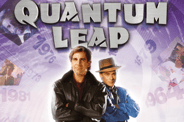If we want to deliver a remarkable experience to a client, we have to earn the prospect first.
And if we want to deliver a remarkable experience to a client continually over the long-term, we have to understand more than just their problems on the surface to which we can offer quick solutions. We have to understand their underlying mission, values, goals, and story. We must uncover their “ends needs.”
If you’re on the frontline staff of any organization that succeeds on sales then you’re on a NEED-to-know basis when it comes to “means needs” versus “ends needs.” eQ published an article that describes the differences between the two terms in detail as well as how to go about discovering these utmost important needs. The reading is available at this link: http://www.entrequest.com/wp-content/pdf/entrequest_means-ends_08.04.pdf?phpMyAdmin=d2c4aa6766ft5760658.
As our oldest clients can attest, eQ has always held the philosophy that profitable prospecting requires researching past the "means needs" (or the solutions needed to fix surface problems) in order to reach the "ends needs" (or the underlying goals of an organization). Fulfill a means needs and you’ve got a sale. Fulfill an ends need and you’ve got a partner.
In his new book “Onward,” the CEO of Starbucks Howard Schultz provides a phenomenal example of a B-2-B company understanding his ends need and winning his business.
Faced with the challenge of transitioning himself as smooth as possible back into the role of CEO, Schultz found himself needing professional guidance but not knowing who to turn to for help as the sensitivity surrounding the situation prohibited him from discussing it with employees at Starbucks. A peer suggested he work with a consulting firm called Kekst and Company which is primarily focused on helping organizations overcome crises, mergers, and abrupt shifts in leadership.
Kekst and WHO?! Huh?
That’s right, even Schultz admits he had never even heard of the company but once he sat down with one of its principals, Jim Fingeroth, evidently he didn’t need to hear of any other company. Schultz writes:
“… as I began to explain the culture and values of Starbucks to Jim, I could see that this was someone who was going to understand and embrace them, as oppose to fighting them as someone else might. If Jim could not help me make changes in a manner compatible with the company’s culture, and do so with a degree of sensitivity and humanity, then we would fracture our partners’ trust.”
As we all well know, there are hundreds of widely-renown consulting agencies whose reputations proceed them out there. Certainly any one of them would have gone to the end of the earth to partner on any project with Starbucks and especially a guaranteed newsmaker like the former CEO returning to his post after a historic sales slump for the world’s most famous coffee chain. However Schultz doesn’t mention considering any other company after meeting Jim and his team at Kekst.
We might not all be that lucky to have an inbound caller like Schultz who goes into the prospecting phase keen on having his ends needs met. Some prospects are so focused on means needs, they themselves divert attention from their ends needs. However had Kekst pulled out their portfolio to show what they’ve done with past clients in terms of transitioning leaders and then demonstrated why the same techniques would work with the similar sized company of Starbucks, Schultz would have probably shook the team's hands, walked over to the nearest Starbucks, accessed Wi-Fi, and continued his search for another consulting company.
The means need here was smoothly reinstating Schultz back into the role of CEO. The ends need was returning Starbucks to sustainable and profitable growth for the benefit of its partners, its customers, and its community. In a most genuine, believable, and trustworthy way, Kekst and Company immediately convinced Schultz that they would meet both his needs.
And as we find out a few chapters later, Kekst did exactly that.
But do you think the relationship between Starbucks and Kekst and Company dissolved like a sugar packet in a latte after this transition? No.
A couple hundred pages later in “Onward,” in the chapter titled “Winning,” the first paragraph reads:
“Sitting in the familiar New York City offices of Kekst and Company – where almost two years earlier, I’d talked about Starbucks’ downfall – I waited to begin what I felt would be the most important earnings announcement the company had made since going public. Starbucks’ profits were growing again.”
There you have it, proof that means needs might give you success in the meantime but ends needs channel champions until the end.
Joe Mechlinski is the President of entreQuest and has partnered with countless leaders to effectively improve their team’s performance, their clients’ experience, and their company’s profits







